Activity Routine

Can regular physical activity prevent depression ?
Regular physical activity can reduce depression risk by releasing endorphins, improving sleep, and boosting self-esteem. Start with 30 minutes daily of activities like walking or swimming, and consider joining a fitness class for motivation. Gradually increase intensity and listen to your body to avoid overexertion.

How can parents incorporate physical activity into their homeschooling routine ?
Incorporating physical activity into a homeschooling routine is crucial for a child's development, as it enhances cognitive abilities, improves mood, and fosters social skills. Parents can achieve this by scheduling regular exercise time, integrating movement into learning, involving outdoor activities, making physical activity fun, setting an example, and using technology. Starting the day with exercise, taking breaks for physical activity, teaching concepts through movement, combining art with movement, planning nature walks or hikes, assigning gardening tasks or outdoor chores, playing games, hosting dance parties, participating in physical activities alongside the child, enrolling the child in online fitness classes or following workout videos, and allowing the child to play active video games are some effective ways to incorporate physical activity into the homeschooling routine.

How much exercise is needed to achieve mental rejuvenation ?
Achieving mental rejuvenation through exercise is a widely discussed topic in recent years, and the benefits of physical activity on mental health are well-documented. However, the question remains: how much exercise is actually needed to achieve these benefits? According to the American Heart Association, adults should aim for at least 150 minutes of moderate-intensity aerobic activity or 75 minutes of vigorous-intensity aerobic activity per week. This can be broken down into 30 minutes of exercise, five days a week. In addition to aerobic activity, it's also recommended that adults engage in muscle-strengthening activities at least two days per week. It's important to listen to your body and adjust your exercise routine accordingly. Practical tips for incorporating exercise into your daily routine include starting small, finding an activity you enjoy, making it a part of your routine, mixing it up, and setting realistic goals. By following these guidelines and tips, you can make exercise a regular part of your life and enjoy the many benefits it brings to both your physical and mental health.
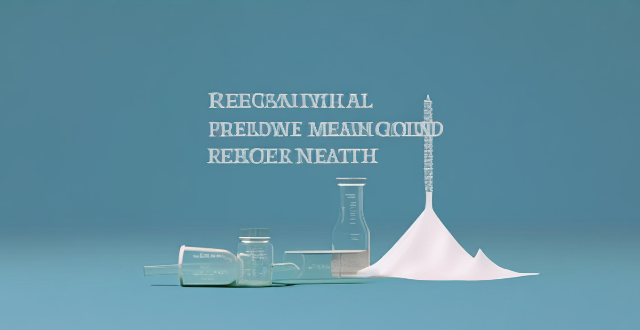
Can regular physical activity improve mental health ?
Regular physical activity can improve mental health by reducing the risk of depression and anxiety, enhancing self-esteem and cognitive function, improving sleep quality, and reducing stress. Practical recommendations for incorporating exercise into daily routines include starting small, finding enjoyable activities, setting realistic goals, making it social, incorporating strength training, staying consistent, listening to your body, and consulting with professionals.
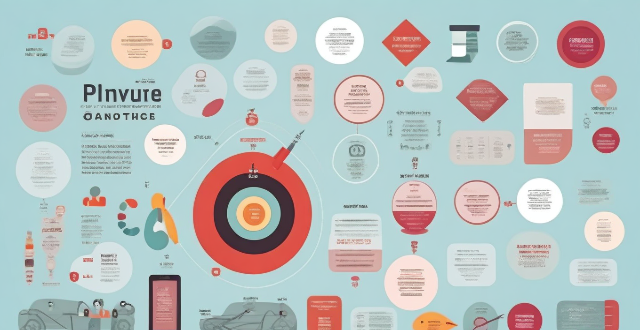
Can regular physical activity reduce anxiety levels ?
Regular physical activity can help reduce anxiety levels by improving mood, reducing stress hormones, promoting better sleep, increasing self-esteem and confidence, and providing social support. Engaging in at least 30 minutes of moderate-intensity exercise per day can significantly reduce anxiety symptoms.

What are the essential steps for a quick makeup routine ?
The essential steps for a quick makeup routine include preparing your skin, priming your face, applying foundation, adding color, defining your eyes, and finishing with lipstick or gloss. This routine can leave you looking polished and put together in no time.

How can I create a sustainable fitness routine for better health ?
Creating a sustainable fitness routine is crucial for maintaining good health and achieving long-term fitness goals. Here are some tips on how to create a sustainable fitness routine: ## 1\. Set Realistic Goals * **Start Small:** Begin with small, achievable goals that you can gradually build upon. This will help you avoid burnout and stay motivated. * **Be Specific:** Clearly define your fitness goals, such as losing weight, gaining muscle, or improving cardiovascular health. ## 2\. Choose an Activity You Enjoy * **Find Your Passion:** Select an exercise that you genuinely enjoy, whether it's running, swimming, cycling, or dancing. This will make it easier to stick to your routine. * **Mix It Up:** Incorporate variety into your workouts by trying different activities or switching up your routine regularly. ## 3\. Make It Part of Your Daily Routine * **Schedule It In:** Treat your workouts as non-negotiable appointments in your calendar. Plan them around your work and personal life commitments. * **Create a Habit:** Aim to exercise at the same time each day to establish a consistent habit. ## 4\. Track Your Progress * **Keep a Journal:** Record your workouts, including the type of exercise, duration, and intensity. This will help you monitor your progress and adjust your routine accordingly. * **Set Milestones:** Celebrate small milestones along the way to stay motivated and focused on your long-term goals. ## 5\. Stay Accountable * **Find a Workout Buddy:** Having a friend or family member to exercise with can provide motivation and accountability. * **Join a Group Class:** Enrolling in group fitness classes can also offer social support and encouragement from others working towards similar goals. ## 6\. Listen to Your Body * **Rest and Recovery:** Allow adequate rest days between workouts to prevent injury and promote recovery. * **Adjust Intensity:** Pay attention to how your body feels during and after exercise. If you're feeling excessively fatigued or experiencing pain, consider reducing the intensity or duration of your workouts. By following these tips, you can create a sustainable fitness routine that supports better health and long-term success. Remember to be patient with yourself and celebrate every step towards achieving your fitness goals!

How does music influence motivation during physical activity ?
Music has a significant impact on motivation during physical activity. Fast-paced music increases energy levels, slow-paced music promotes relaxation, and enjoyable music enhances mood. Music can also distract from pain and fatigue, and personal preference plays a role in its effectiveness. Incorporating music into workout routines can make exercise more enjoyable and lead to better results.

How can I incorporate stretching into my gym routine ?
Stretching is essential for any fitness routine. It improves flexibility, reduces injury risk, and enhances performance. Here are tips on incorporating stretching into your gym routine: dynamic stretches before workouts, foam rolling, active isolation stretches during workouts, resistance band stretches, static stretches after workouts, yoga or Pilates, and cooldown stretches. Incorporating stretching into your routine will help you reap the benefits of a well-rounded fitness regimen.

Can I continue my regular workout routine during pregnancy ?
During pregnancy, it is important to maintain a healthy lifestyle, including regular exercise. However, consulting with your healthcare provider before continuing any workout routine during pregnancy is crucial. Regular exercise can improve cardiovascular health, reduce the risk of gestational diabetes, and alleviate symptoms of depression and anxiety. It can also help control weight gain during pregnancy and make it easier to lose the baby weight after delivery. Low-impact cardio exercises, strength training, and flexibility exercises are safe options for pregnant women. It is essential to listen to your body, avoid high-risk activities, and stay hydrated and nourished. Seeking professional advice is crucial for first-time pregnancies, multiple gestation pregnancies, and pregnancies with complications. Continuing a regular workout routine during pregnancy can be beneficial for both you and your baby, but making necessary modifications to ensure safety and well-being is essential.
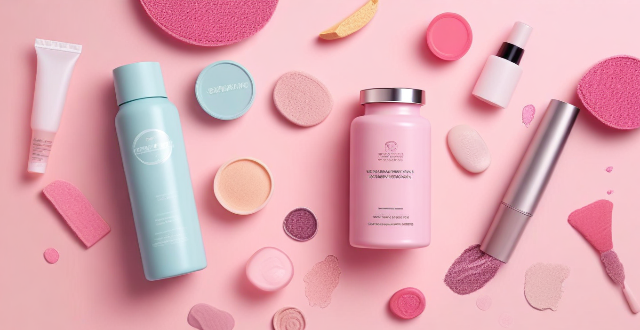
What are some tips for creating a minimalist makeup routine ?
Creating a minimalist makeup routine can save time, money, and space while still looking polished. Focus on skincare first, choose multi-tasking products, stick to neutrals, emphasize one feature at a time, use tools wisely, simplify your routine, practice moderation, and keep it consistent. This approach enhances natural beauty without overwhelming your schedule or vanity.

Can regular physical activity help in reducing stress and anxiety ?
Regular physical activity can help reduce stress and anxiety by promoting the release of endorphins, improving sleep quality, and boosting self-esteem. Aerobic exercises like running, swimming, or cycling are particularly effective because they increase heart rate and circulation, leading to improved oxygenation of the brain. Yoga and tai chi focus on breathing and relaxation techniques that can also help reduce stress and anxiety. The American Heart Association recommends at least 150 minutes of moderate-intensity aerobic exercise or 75 minutes of vigorous-intensity aerobic exercise per week for adults. Finding an exercise routine that works for you and that you enjoy is key to sticking with it over time.

What is the daily routine of a celebrity like ?
The text provides an overview of the daily routine of a celebrity, which includes exercise, breakfast, checking social media and emails, work commitments, lunch break, appearances or events, dinner parties, relaxation time, and bedtime routine. Despite their hectic schedules, celebrities prioritize self-care and maintaining a healthy lifestyle.

What are some ways to incorporate physical activity into my daily routine while still having time for socializing ?
Incorporating physical activity into your daily routine can be a challenge, especially if you have a busy schedule or limited time for exercise. However, there are several ways to incorporate physical activity into your daily routine while still having time for socializing. Here are some ideas: 1. Take the stairs instead of the elevator. 2. Walk or bike to work. 3. Schedule time for exercise. 4. Join a sports league or club. 5. Take active lunch breaks. 6. Invite friends to join you. 7. Use apps or devices to track your progress.

How can I incorporate simple yoga moves into my daily routine ?
Incorporating simple yoga moves into your daily routine can improve your health and well-being. Start with basic poses, create a morning or evening routine, take short breaks throughout the day, use yoga as exercise, practice mindfulness and breathing techniques, and join a class or workshop to learn more advanced poses.

How can people with disabilities incorporate physical activity to improve their mental well-being ?
Physical activity is crucial for everyone's mental well-being, including those with disabilities. Engaging in physical activities can help reduce stress, anxiety, and depression while improving mood, self-esteem, and overall quality of life. Here are some ways people with disabilities can incorporate physical activity into their lives to improve their mental well-being: start slowly and gradually increase intensity; find an appropriate exercise routine; set realistic goals; incorporate mindfulness techniques; seek support from peers and professionals; make it fun!

Can physical activity reduce the risk of heart disease ?
Regular physical activity can significantly reduce the risk of heart disease by improving blood circulation, strengthening heart muscles, and reducing major risk factors such as high blood pressure, high cholesterol, and diabetes. Recommended types of exercise include aerobic activities and strength training. Following guidelines from health organizations like the WHO can help maintain cardiovascular health.

Is it possible to master a 5-minute makeup routine ?
The text answers the question of whether it is possible to master a 5-minute makeup routine in the affirmative, providing tips on how to achieve a polished look quickly.
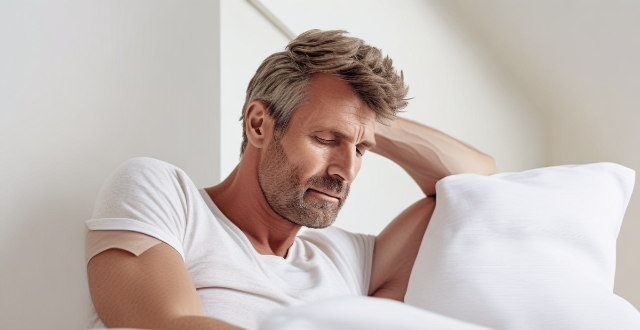
How important is bedtime routine for improving sleep ?
The article discusses the importance of having a bedtime routine for improving sleep. It explains how a bedtime routine can help regulate the body's internal clock, reduce stress and anxiety, promote better sleep quality, and improve mental health. The article also provides steps for creating a bedtime routine, including setting a consistent bedtime, choosing relaxing activities, creating a comfortable sleep environment, and sticking to the routine consistently.

Which celebrity has the best skincare routine ?
Gwyneth Paltrow's skincare routine is simple yet effective, focusing on natural ingredients and healthy habits. Key aspects include cleansing, exfoliation, moisturizing, sun protection, and prioritizing healthy habits. This routine results in improved complexion, reduced signs of aging, protection from sun damage, and a natural glow. By following her example, you can achieve healthier, more radiant skin.
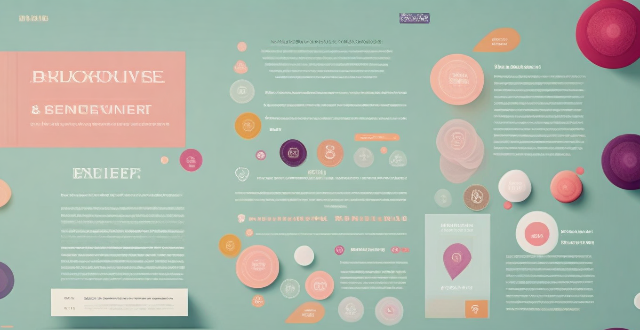
Is there a link between physical activity and improved creativity ?
The text discusses the potential relationship between physical activity and creativity, highlighting various studies and theories that support this link. It suggests that regular physical exercise can enhance creativity by improving blood flow to the brain, promoting a relaxed mental state, and providing necessary breaks from mentally demanding tasks. The text also explores practical implications for individuals and organizations, suggesting strategies such as integrating movement into daily routines and designing active workspaces to boost creative thinking. Overall, while more research is needed to fully understand the relationship between physical activity and creativity, the text encourages incorporating physical activities into daily practices to potentially enhance imaginative thinking and innovation.

What are the benefits of a proper warm-up before physical activity ?
Warming up before physical activity is crucial for performance and injury prevention. Key benefits include increased blood flow, enhanced muscle temperature, joint lubrication, mental preparation, reduced injury risk, improved performance, and less muscle soreness. Incorporating a structured warm-up with dynamic stretching and specific exercises can maximize these benefits.

What is the importance of sunscreen in a beauty routine ?
Incorporating sunscreen into your daily beauty routine is crucial for protecting your skin from the harmful effects of ultraviolet (UV) radiation. It prevents skin cancer, avoids premature aging, acts as a shield, maintains skin health, provides peace of mind, and considers environmental impacts. To incorporate sunscreen into your routine, apply it every morning, reapply every two hours or after swimming/sweating, choose a broad-spectrum formula, opt for water-resistant if engaging in water activities, and use a sunscreen with at least SPF 30.
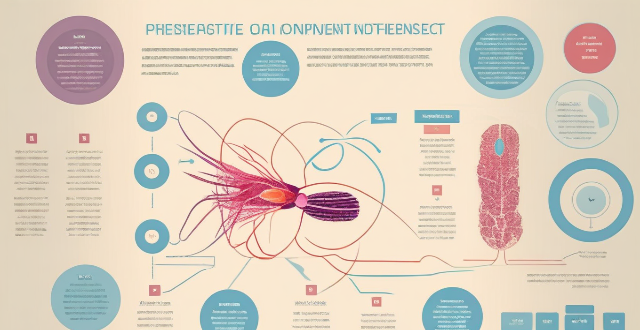
How does consistent physical activity affect the immune system in relation to chronic disease prevention ?
The article discusses the impact of consistent physical activity on the immune system and its role in preventing chronic diseases. It explains that regular exercise can increase the number and activity of immune cells, reduce inflammation, and improve overall health. The article also provides recommendations for exercise and emphasizes the importance of incorporating physical activity into one's lifestyle to prevent chronic diseases and improve well-being.
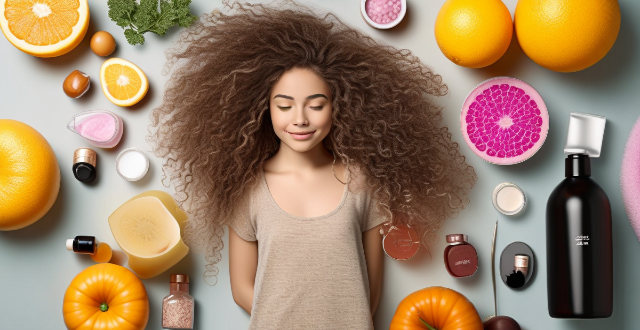
How can I speed up my morning beauty routine without sacrificing quality ?
To speed up your morning beauty routine without sacrificing quality, focus on preparation, efficient organization, and smart product choices. Streamline your routine by removing non-essential steps, use multitasking products, and invest in quick drying tools. Simplify your makeup routine, stick to a natural look, and concentrate on key areas. Keep your beauty items organized and easily accessible, shorten your skincare routine, and master quick hairstyles. Prepare accessories and meals in advance, and maintain regular maintenance for hair and nails.

How to choose the right extracurricular activity for your child ?
Choosing the right extracurricular activity for your child is crucial for their development and well-being. Consider your child's interests, skills, and abilities, evaluate the time commitment and logistics, seek recommendations and read reviews, and involve your child in the decision-making process to help them choose an activity they will enjoy and benefit from.

How can I organize my cleaning routine to save time ?
The text provides tips on how to organize your cleaning routine to save time. It suggests creating a cleaning schedule with daily, weekly, and monthly tasks; using multi-tasking products; decluttering regularly; involving family members in the process; and using technology to streamline the routine. By following these tips, you can plan, prioritize, and stay consistent with your cleaning schedule to save time.
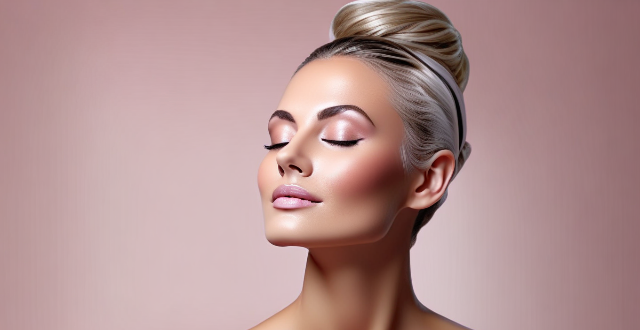
What role does skincare play in a celebrity's makeup routine ?
Skincare is a fundamental aspect of a celebrity's makeup routine, as it ensures a flawless complexion and long-lasting makeup application. Celebrities understand the importance of healthy skin, which acts as a smooth canvas for makeup application. They invest in high-quality skincare products and follow a consistent routine to prevent premature aging and maintain a youthful appearance. Tips for achieving flawless skin include cleansing, toning, moisturizing, using sunscreen, exfoliating regularly, and investing in high-quality products. By prioritizing their skin's health, celebrities can enjoy a radiant glow that enhances their overall beauty.

How does hydration affect physical activity ?
Hydration is crucial for physical activity, affecting performance, endurance, and well-being. It regulates body temperature through sweating and heat tolerance, supports energy production and recovery, lubricates joints, maintains blood volume for heart function, and ensures mental clarity. Dehydration can lead to decreased performance, impaired thermoregulation, cardiovascular strain, and reduced cognitive abilities. To maintain hydration during physical activity, strategies include pre-activity hydration, regular fluid intake during exercise, post-activity rehydration, electrolyte balance, monitoring urine color, listening to thirst signals, and avoiding diuretics.

How do wearable devices integrate with health management apps to provide more accurate data on physical activity levels ?
Wearable devices and health management apps work together to provide accurate physical activity data. The integration process involves data collection, transmission, analysis, visualization, and feedback. This collaboration offers benefits such as accurate data tracking, personalized insights, goal setting and tracking, and improved health outcomes. Examples of integrated systems include Fitbit and Fitbit App, Apple Watch and Apple Health App, and Garmin Devices and Garmin Connect App.